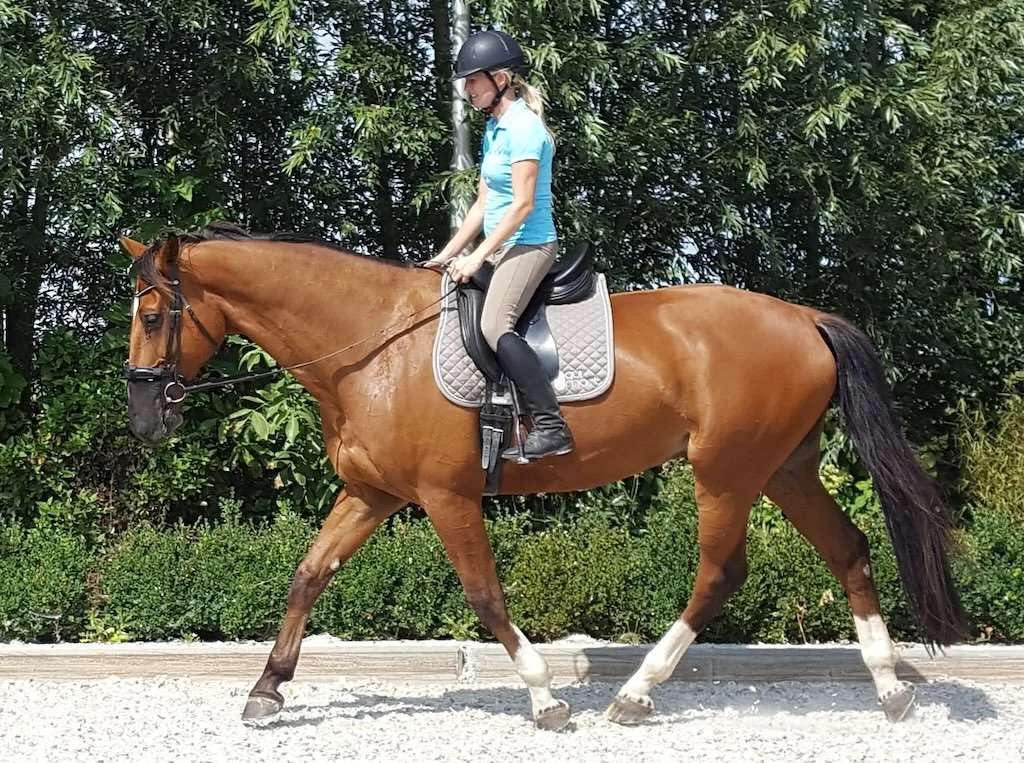Hypermobility can be a problem in riders too
Hypermobility can cause a lot of problems in the rider as well. If you’re on the flexible side, never ignore back pain, even if it’s mild.
Never ignore back pain, especially if you are more on the flexible side.
Hypermobility in horses can increase the risk of a multitude of issues, including back pain, kissing spines, suspensory ligament problems, thoracic sling dysfunction and much more. We have stressed time and time again just how important it is to be aware of this and how crucial it is to act preventatively. In horses, we achieve this with careful postural training, core strengthening and not starting them under saddle too early. But did you know that riders can be hypermobile too?
People who are very flexible might seem like they're better off than the rest of us, but the truth is, being overly flexible comes at a price. These riders often suffer from serious back pain and in the long run can run into issues like kissing spines too. (Yes, kissing spines in humans is a thing – it's also called Baastrup syndrome.) The back pain might initially come up gradually – maybe only when riding a horse that isn't particularly balanced. Maybe it only comes up when the horse bucks, or spooks suddenly. Perhaps the rider only feels some back pain after a session of jumping. It's easy to ignore this, take a painkiller and get on with it, but in time this can have dire consequences. Never take back pain lightly.
So, what can we do about it? First of all, if you are hypermobile (there's a test online, you can look it up), you need to realise that taking care of your back will be a life-long project. People who are more flexible tend to be attracted to activities where their flexibility is a positive thing – think yoga, dancing, gymnastics. But that’s exactly what their bodies don't need. What they do need is more strength. For flexible folks, weightlifting (under a trainer supervision, of course), core strengthening and balancing exercises are a must. A lot of riders think they are strong because they have been riding since forever and that if they can sit a trot, then they must have appropriate core muscles. But that's not always true. Strengthening the core out of the saddle is extremely important, because it is vital that we know not just how to turn the right muscles on, but also how to turn the right ones off. It's about control. This is what really helps us protect our spine.
In addition to strengthening work, taking care of our musculoskeletal system is important too. If your back hurts, go see a physio. Or even if it doesn't, go get checked out by a good bodyworker on a regular basis. Make sure your muscles and your connective tissue are working properly. Don't just ignore it, take painkillers and hope it goes away. You wouldn't do that with your horse, would you? Many riders put their horse first and decide to rather spend money on a bodyworker for the horse and not themselves. But taking care of our bodies is just as important, so please, go and schedule a bodyworker appointment, especially if you are on the flexible side.
